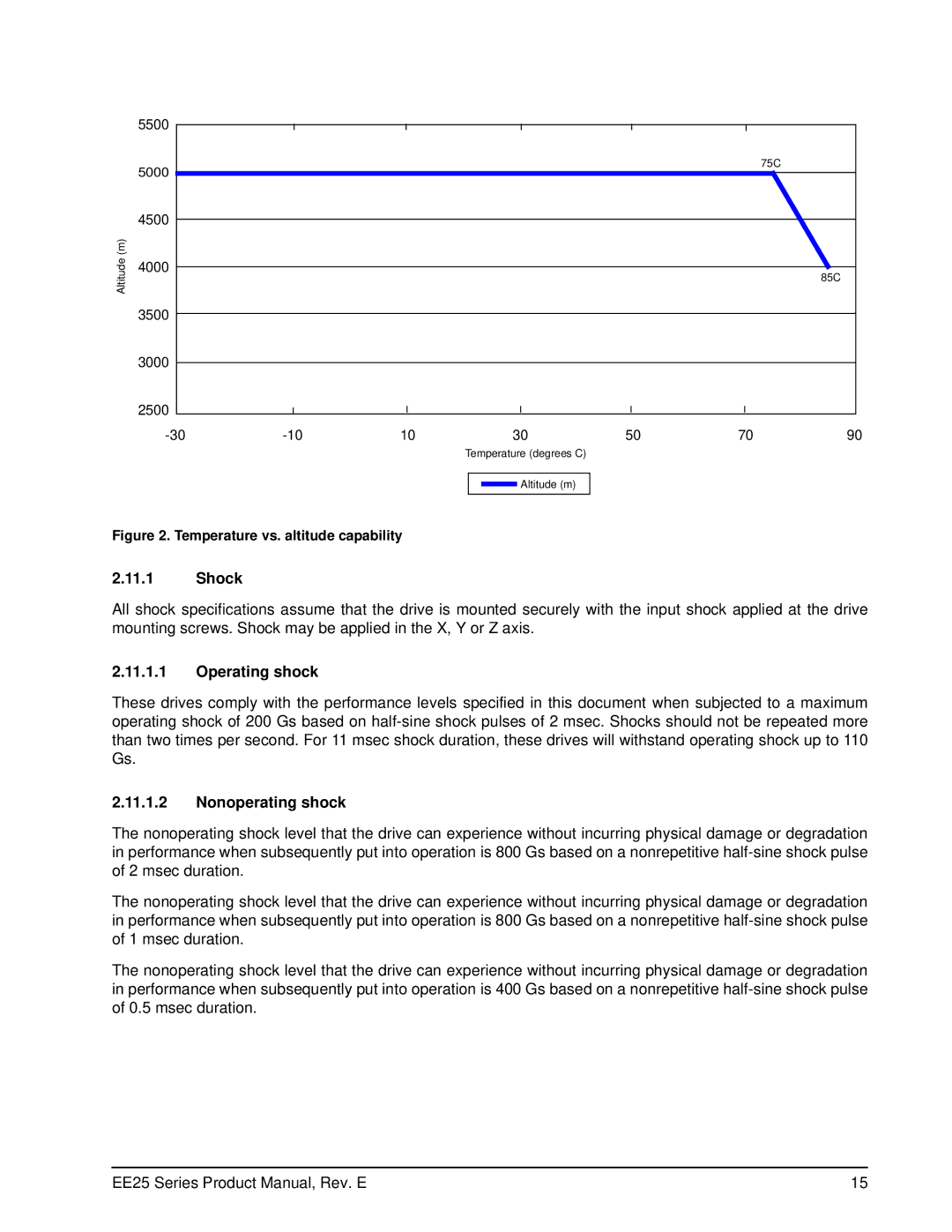
| 5500 |
|
|
|
|
|
|
| 5000 |
|
|
|
|
| 75C |
|
|
|
|
|
|
| |
| 4500 |
|
|
|
|
|
|
(m) |
|
|
|
|
|
|
|
Altitude | 4000 |
|
|
|
|
| 85C |
|
|
|
|
|
| ||
|
|
|
|
|
|
| |
| 3500 |
|
|
|
|
|
|
| 3000 |
|
|
|
|
|
|
| 2500 |
|
|
|
|
|
|
| 10 | 30 | 50 | 70 | 90 |
Temperature (degrees C)
Altitude (m)
Figure 2. Temperature vs. altitude capability
2.11.1Shock
All shock specifications assume that the drive is mounted securely with the input shock applied at the drive mounting screws. Shock may be applied in the X, Y or Z axis.
2.11.1.1Operating shock
These drives comply with the performance levels specified in this document when subjected to a maximum operating shock of 200 Gs based on
2.11.1.2Nonoperating shock
The nonoperating shock level that the drive can experience without incurring physical damage or degradation in performance when subsequently put into operation is 800 Gs based on a nonrepetitive
The nonoperating shock level that the drive can experience without incurring physical damage or degradation in performance when subsequently put into operation is 800 Gs based on a nonrepetitive
The nonoperating shock level that the drive can experience without incurring physical damage or degradation in performance when subsequently put into operation is 400 Gs based on a nonrepetitive
EE25 Series Product Manual, Rev. E | 15 |
